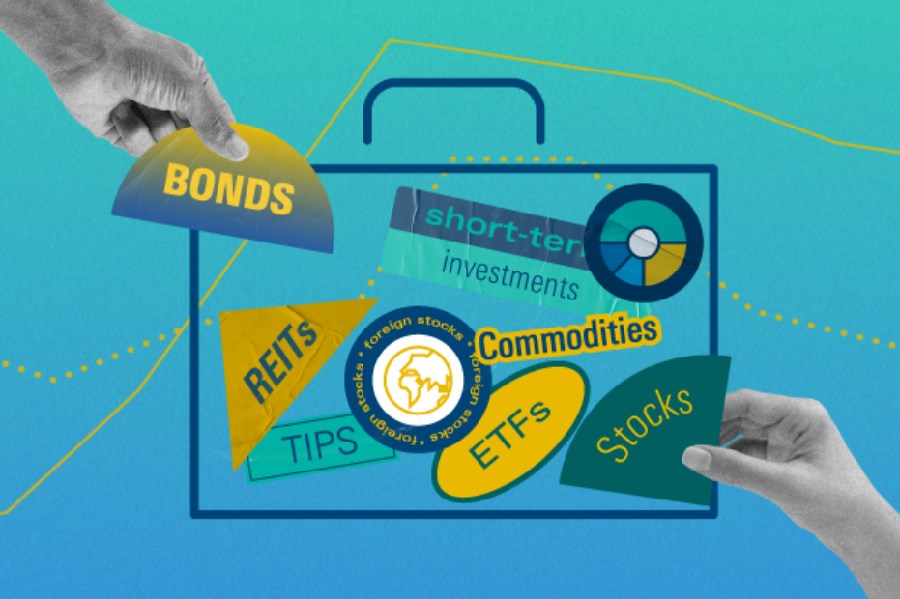Jason Stipp: I'm Jason Stipp for Morningstar. Making your portfolio more conservative as you approach retirement involves more than just moving more money into bonds and cash. Here to talk about that topic is Christine Benz, our director of personal finance.
Christine, thanks for joining me.
Christine Benz: Jason, it's great to be here.
Stipp: Most investors do know as they approach retirement that they will be moving money from stocks into bonds in order to control for volatility; but other folks will suggest you should look at the intra-asset-class exposures--the kinds of stocks you hold, the kinds of bonds you hold--and also make adjustments there. Why might you want to do that as well?
Benz: This is an area that our colleagues at Morningstar Investment Management have looked at, and certainly when we look at the glide paths of target-date funds, we can see some thinking on this topic as well. The basic idea is that as an investor's time horizon shortens, he or she may not be able to be compensated for risks that may be embedded in the portfolio.
So, [for example,] there's the small-cap value effect, which has been well documented in a lot of literature, showing that small-cap value stocks outperform over long periods of time. As your time horizon shortens, you may not have time to benefit from that small-cap value effect if, in fact, it occurs again in the future.
So, you need to kind of back away from those tilts. You want to maintain a more or less neutral stance versus some of those tilts because your time horizon isn't long enough for you to potentially benefit from them. Then, you also want to factor in the fact that, as you are retired, you may have new risks that you are facing. Preserving purchasing power, for example, is a huge new challenge for retirees that wasn't necessarily there for people who were accumulating assets, still earning a paycheck, and not necessarily so concerned about preserving their purchasing power.
Stipp: There are a couple of schools of thought about how you might affect this kind of change in your portfolio. One is a little more hands-off, and one would be a little more hands-on.
Benz: Right. The hands-off approach would be that, as you reduce your portfolio's equity weighting, its weightings in some of the higher-risk asset classes naturally will be reduced as well. As your equity exposure goes down, you'll have less in small-cap stocks. So, you don't need to be too hands-on. That's one school of thought where you maintain more or less static intra-asset-class exposures as you get close to retirement.
The other school of thought--and this is the one that some of our colleagues here have worked on--is that you would be a little bit more active in terms of tinkering with those intra-asset-class exposures. So, you might put in place a small-cap value tilt when you're in your 20s, 30s, and 40s; but when you get closer to retirement, you want to try to neutralize that weighting. So, one school of thought would be more or less passive--let the overarching asset-class exposures do the heavy lifting. The other would involve being a little more active in terms of tinkering with those underlying exposures.
Stipp: So, within your stock sleeve, if you did that tinkering, you would also be tamping down volatility; even though it's a smaller sleeve now, it would be less volatile than if you didn't make some of those changes.
Benz: That's right.
Stipp: So, when you look across the different off-the-shelf guidance for asset allocation--whether it's Morningstar or some of the target-date funds--what are some of the themes, then, that you're seeing, as far as changes that they might be making to some of these intra-asset classes?
Benz: One of the themes I already mentioned is the role of small-cap stocks--that it tends to be greater. In fact, some of the target-date series and Morningstar's Lifetime Allocation Indexes incorporate a slight tilt to small-cap stocks--maybe value stocks as well--but that bet becomes neutralized as the portfolio gets closer to being liquidated, gets closer to retirement. So, that's one theme that we see.
We also see some changes in the foreign allocations, both foreign equities and foreign bonds. For young accumulators, the foreign equities, as a percentage of the total equity exposure, would be larger; in some cases, a third or more of the equity exposure would consist of foreign stocks. As that portfolio gets closer to retirement, it would reduce that stake accordingly. So, you would take it down to something like 20% of equity assets.
We see the same thing with foreign-bond exposure, where it might start out higher. That young accumulator really benefits from the diversification that comes along with foreign bonds. But as the person gets closer to retirement, that foreign-bond weighting, as a percentage of fixed income, would decline. The main idea there is not so much that we don't like foreign stocks and bonds in retirement, it's that we don't want those foreign-currency fluctuations to hit us at a bad time. That's particularly important with the bond piece of the portfolio, where maybe your queueing money up for spending in retirement. You don't want to risk having the big drop of a foreign-currency fluctuation. You don't want that to hit you at an inopportune time, which is one reason we see a lot of these glide paths backing off foreign-bond exposure.
I will say, however, there are hedged foreign-bond products, and those would obviously eliminate those foreign-currency swings. Those would arguably be a little more appropriate for people who are getting close to retirement.
Stipp: So, those currency swings in bonds could swamp the regular returns that you would see just from the coupons if you have that exposure.
Benz: Exactly.
Stipp: On the bond side, you might be taking away some of that foreign-currency exposure. Anything else you might be doing with the bond asset-class tinkering within your fixed-income sleeve to make things more appropriate for retirement?
Benz: A couple of other observations--and I think they make a lot of sense when we look at this intra-asset-class positioning among target-date glide paths and Morningstar's Lifetime Allocation Indexes. One thing we see is, generally speaking, a smaller position in long-term bonds for people getting close to retirement and a larger one for young accumulator. The basic idea is that long-term bonds are great diversifiers; they are great additions to portfolios for people who are really just holding bonds to provide diversification, not to provide any spendable dollars. The challenge becomes different for people who are getting close to retirement; you don't want those big interest-rate-related swings hitting the retiree at an inopportune time. So, generally speaking--and certainly in Morningstar's Lifetime Allocation Indexes--we see higher weightings in short- and intermediate-term bonds for people getting close to retirement and less in long-term bonds.
Another thing that we notice is that the role of Treasury Inflation-Protected Securities changes. For young accumulators, these securities play a minimal or nonexistent role in portfolios. The reason is that the person earning a paycheck is eligible for cost-of-living adjustments and probably doesn't need to lay that bulwark against inflation. That becomes a bigger challenge for people who are spending from their portfolios; they really need to make sure that they are laying in that inflation protection that comes along with Treasury Inflation-Protected Securities, that comes along with I Bonds--if you own them in your portfolio. But the basic idea is that you've got a new risk going on in your portfolio in retirement and you need to protect against it.
Stipp: A lot of these intra-asset-class moves seem to be designed to tamp down volatility within those asset classes. Are there any retirees, though, who could maybe afford to maintain some of that volatility and the higher returns over time that could come with it?
Benz: I think it gets back to time horizon. If you are looking at your portfolio and thinking that you plan to spend all of that money during your lifetime, you may not have time to benefit from those tilts. But certainly, for retirees who look at their portfolios and say they have more than enough money to live on or maybe they have a pension that's supplying a lot of their needed income, those people are really building and maintaining this portfolio--or at least part of it--for their kids and grandkids, charity, whatever it might be. For such an individual--a lucky individual--I think such tilts are more appropriate. If your time horizon for a part of your portfolio is 30 years or more, think about laying in a little bit of a small-cap value tilt; think about running a truly globally diversified portfolio. I think it makes sense as your time horizon elongates.
Stipp: Some very interesting refinements that investors should consider for their intra-asset-class exposures in retirement. Thanks, Christine, for joining me.
Benz: Thank you, Jason.
Stipp: For Morningstar, I'm Jason Stipp. Thanks for watching.





















